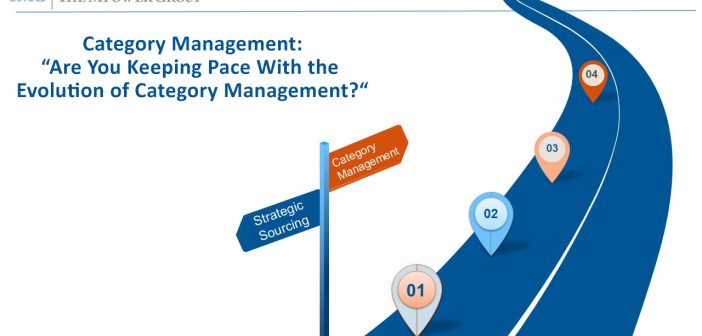I didn’t realize that Category Management (“CM”) had started evolving already but the headline caught my attention. The article actually makes some interesting points about CM and they are very consistent with what we have been saying for a number of years…
“ . . . mastering category management to understand the needs of stakeholders and meet those needs consistently”
“ . . . move to a more collaborative approach to ensure that strategies are aligned to fulfill the needs of the ever-changing stakeholder”
“Moving forward, it really needs to be about what is driving change in the market and how the stakeholder is impacting that change”
“CM was more around the category vs. what the stakeholder wanted”
“ . . a process to create a comprehensive plan that meets stakeholder needs in a superior manner to produce excellent business results”
“Category management excellence requires a disciplined structure and process designed to identify key insights to fuel growth.”
“Today, category management and stakeholder insights professionals (people on your team who can identify Stakeholder Value Drivers) are dynamically linked due to the emergence of new industry concepts that require a broader view of the strategic decision-making framework,”
The article goes on to say:
Best practices for keeping pace with the evolution of category management are:
- Stop negotiating business plans and developing category plans in the absence of the Stakeholders. Stakeholder Value Drivers and Stakeholder marketing need to be included in, not separate from, category management.
- Know your Stakeholders and stay up-to-date on category trends
- It’s not just about a planogram anymore. It’s about strategy, understanding the Stakeholder’s path to purchase, and ensuring you have the right products available on whatever path the Stakeholder chooses.
- Those companies that can store data and access the information on a timely basis will be well positioned to meet and predict Stakeholder demands.
- Document and share your overall category management strategies across the entire organization. Keep this updated annually. Develop onboarding tools to teach new team members what you’re trying to accomplish. Also share your objectives with your trusted suppliers and ask them to bring in shopper-focused solutions that match your goals.
Now here’s the kicker. They are NOT talking about CM as you and I know it – they are talking about a totally different CM – one from the retail sector where the term actually originated. All I did was change the word consumer or customer to Stakeholder to illustrate the absolute fundamental similarities between the two.
When asked, what is the biggest difference we have identified between Strategic Sourcing and CM , our answer is – Stakeholder Value Drivers (“SVDs”) must drive CM and that is non-negotiable 😊. Then all of the above makes total sense. Your CM plans must be driven off SVDs. You need a structured process and tools. You need different competencies (e.g. customer insight professionals above). And only your Stakeholders can define their Value Drivers and you will need those competencies to identify and understand their Value Drivers. Communicate often, adopt a collaborative approach, engage your suppliers in aligning to SVDs – ALL of these are Best Practices in that other Category Management and they are as applicable in ours?
Sometimes, it’s valuable to examine the roots of some of the “new” concepts being bandied about and see where they are headed to learn and adopt.


